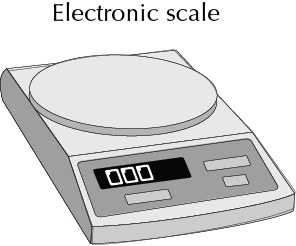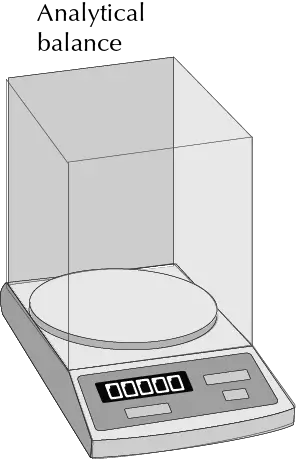Methods of Measuring Liquids Weighing Solids
Weighing solids and liquids is a common practice in a variety of fields, including science, industry, and everyday life.
One of the first techniques students should become familiar with in the laboratory is weighing substances to carry out chemical reactions with the required amounts. In addition, it is essential to properly calculate yields, weigh the amount of solute required to prepare a solution of a given concentration, and to ensure the proper proportions of ingredients in recipes or chemical reactions.
There are several different methods for weighing solids and liquids, depending on the nature of the substance and the accuracy required.
Most commonly used balance types
- Top loading balance: these scales use electronic sensors to measure the weight of an object. They are often used for larger quantities and can provide accurate results in a short amount of time. Top loading balances are employed for determining or weighing substances with medium to low average accuracy. It has a sensitivity of 0.1 g or 0.01 g, typically with weighing capacities of 100 to 200 g with 0.001 g accuracy. There are also some that can have weighing capacities of up to 2 kg and with an accuracy of up to 0.01 g. The weighing error with this type of balance is acceptable in Organic Chemistry experiments where the quantities of substances are generally not less than 1 g. They are significantly cheaper than analytical balances.

- Analytical balance: a very precise instrument (usually digital)
for weighing with a small margin of error. It can weigh the mass of a
substance in grams, with an uncertainty of 0.00001 g (0.01 mg). For most experiments in a practical course, such accuracy is not required, except in microscale reactions, sample preparation for spectroscopy, or determination of the optical rotation of a particular substance.

Weighing solid substances
To weigh a solid, place a weighing container (weighing vessel or substance weigher) on the balance pan and then set it to zero by pressing the corresponding tare button.

Then add with a spatula, the amount of substance until the required mass value is reached. The following should be taken into account:
- No solid reagents should be weighed directly on the balance pan, as contact with chemicals can deteriorate the balance over time. After use, the balance should always be left completely clean of reagents (a small brush can be used for this purpose).
- For solids and relatively inert compounds, a piece of aluminum foil can be used to prevent solid residues from being retained, and the remaining substance is transferred with the aid of a spatula. The size of the paper should be appropriate to the size of the balance pan. If it is too large, it can touch any part of the balance or be moved by small air currents generated by the movement of the hands when weighing, causing significant errors in the weighing.
- This procedure is not suitable for weighing corrosive or oxidizing substances. Typical cases are potassium permanganate K2MnO4 (which reacts with cellulose paper) and metallic sodium which reacts with air. For these cases, a beaker or tared flask can be used, because its wide mouth allows the substance to be added or removed conveniently. Another possibility is to use a Petri dish or a glass watch. In the case of sodium, the flask or container used must contain an inert liquid that avoids contact of the metal with air.
Video on weighing solids
Weighing liquids
Liquids or syrups can be weighed with the aid of a dropper and a vessel (flask, Erlenmeyer flask, etc.). To avoid unnecessary transfers, the vessel can be the same one in which the reaction will be carried out. The empty vessel with the dropper inside is tared and then the sample is taken with the dropper. The contents are added to the vessel, and the amount is found by holding the dropper inside the container until the desired mass is obtained. Then add part of the solvent to be used in the reaction, and by using this, the contents of the dropper are cleaned of the remaining reagent.
References
- Isac-García, J.; Dobado, J. A.; Calvo-Flores, F. G.; and Martínez-García, H. (2015). Experimental Organic Chemistry Laboratory Manual. Elsevier Science & Technology. ISBN: 978-0-12-803893-2